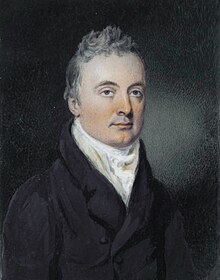Sir John Osborn, 5th Baronet
This article needs additional citations for verification. (September 2007) |
Sir John Osborn, 5th Baronet | |
|---|---|
 Osborn, c. 1810 | |
| Member of Parliament for Wigtown Burghs | |
| In office 1821–1824 | |
| Member of Parliament for Bedfordshire | |
| In office 1794-1800 1801-1807 1818-1820 | |
| Member of Parliament for Queenborough | |
| In office 1812–1818 | |
| Member of Parliament for Cockermouth | |
| In office 1807–1808 | |
| Personal details | |
| Born | 3 December 1772 |
| Died | 28 August 1848 (aged 75) |
| Spouse | Frederica Davers |
| Children | 8 |
| Parent |
|
| Relatives | Danvers Osborn (grandfather) |
| Education | Christ Church, Oxford |
| Military career | |
| Rank | Colonel |
| Unit | Bedfordshire Yeomanry British Volunteer Corps |
| Commands | Bedfordshire Militia |
Sir John Osborn, 5th Baronet (3 December 1772 – 28 August 1848), of Chicksands Priory in Bedfordshire, was an English politician.[1]
Biography
[edit]
He was the only son of Sir George Osborn, 4th Baronet who he succeeded in 1818. He was educated at Westminster School and Christ Church, Oxford.[1][2]
Osborn was Member of Parliament for Bedfordshire, 1794–1807; for Cockermouth, 1807–1808; for Queenborough, 1812–1818; again for Bedfordshire, 1818–1820 and for the Wigtown Burghs 1821–1824. He served as a Lord of the Admiralty from 1812 to 1824 and as one of the Commissioners of Audit from 1824 until his death.[1][2]
In 1797 he served as a Captain in the Bedfordshire Yeomanry and in 1803–05 in the Bedford Volunteers.[1] On 12 January 1805 the Earl of Upper Ossory as Lord Lieutenant of Bedfordshire appointed him as Colonel of the Bedfordshire Militia after his predecessor was removed following a court of enquiry. As a young man Osborn's father had been an officer in the regiment when it was reformed in 1759, before joining the regular army and rising to the rank of General.[1][2][3][4] In March 1805 Col Osborn joined the regiment and marched it to barracks at Berry Head near Brixham for its summer training, but thereafter direct command was usually exercised by the lieutenant-colonel. Osborn retained the command of the regiment until his death.[5]
He died in 1848. He had married Frederica Louisa, the illegitimate daughter of Sir Charles Davers, 6th Baronet, with whom he had 5 sons and 3 daughters. He was succeeded in the baronetcy and family estates by his eldest son George Robert, the 6th baronet.[1][2]
References
[edit]Sources
[edit]- Lt-Col Sir John M. Burgoyne, Bart, Regimental Records of the Bedfordshire Militia 1759–1884, London: W.H. Allen, 1884.
- Burke's Peerage, Baronetage and Knightage, 100th Edn, London, 1953.
- War Office, A List of the Officers of the Militia, the Gentlemen & Yeomanry Cavalry, and Volunteer Infantry of the United Kingdom, 11th Edn, London: War Office, 14 October 1805/Uckfield: Naval and Military Press, 2005, ISBN 978-1-84574-207-2.
External links
[edit]- History of Parliament Online
- Hansard 1803–2005: contributions in Parliament by Sir John Osborn
- leighrayment.com[usurped]
- http://www.leighrayment.com/baronet.htm[permanent dead link]
- 1772 births
- 1848 deaths
- People educated at Westminster School, London
- Alumni of Christ Church, Oxford
- Bedfordshire Militia officers
- Baronets in the Baronetage of England
- Lords of the Admiralty
- Cumbria MPs
- Members of the Parliament of Great Britain for English constituencies
- British MPs 1790–1796
- British MPs 1796–1800
- Members of the Parliament of the United Kingdom for English constituencies
- Members of the Parliament of the United Kingdom for Scottish constituencies
- UK MPs 1801–1802
- UK MPs 1802–1806
- UK MPs 1806–1807
- UK MPs 1807–1812
- UK MPs 1812–1818
- UK MPs 1818–1820
- UK MPs 1820–1826
